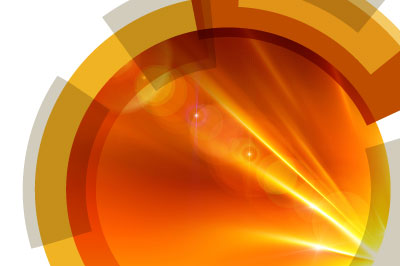The poster presents a detailed study on the identification of unreacted silver ions in silver nanoparticles (Ag NPs) synthesized using an environmentally friendly method. The focus of the study is on utilizing Xanthosoma atrovirens (Aurum) leaf extract for the green synthesis of Ag NPs and assessing their quality and electrocatalytic activity using a cyclic voltammetry technique.
The initial part of the study outlines the synthesis of Ag NPs. Xanthosoma atrovirens, known for its abundance and cost-effectiveness, was chosen for the synthesis. The leaves were blended in an aqueous medium to extract their essence, which was then mixed with a silver nitrate solution to form Ag NPs. This process highlights the study's commitment to eco-friendly and sustainable practices in nanomaterial production.
The next phase involved the modification of homemade graphite rod electrodes (GRE) with the synthesized Ag NPs. Various deposition methods like dipping, drop-casting, and electrodeposition were considered, with drop-casting being selected for its simplicity and low cost. The electrodes were polished, cleaned, and then coated with the Ag NP solution using the drop-casting method. This modification aimed to enhance the electrode’s surface for electrochemical analysis.
For the electrochemical characterization, techniques like Cyclic Voltammetry (CV), Differential Pulse Voltammetry (DPV), and Electrochemical Impedance Spectroscopy (EIS) were employed. These techniques are crucial in understanding the electron transfer processes and the electrochemical properties of the modified electrodes. The results from these methods showed an increased current density in the modified electrodes compared to the bare ones, indicating an improvement in the electrocatalytic activity due to the presence of Ag NPs.
However, despite these improvements, a relative weakness in electrocatalytic activity was observed, suggesting that not all Ag ions were converted into metallic Ag NPs during the synthesis process. To investigate this, a series of CV experiments were conducted. The CVs measured in the presence and absence of redox species in the electrolyte provided significant insights. Notably, the electrochemical reduction peak of Ag+ ions to elemental Ag, observed at around 0.1688 V versus Ag/AgCl reference electrode, confirmed the presence of unreacted Ag ions in the green-synthesized Ag NPs.
This finding is crucial as it opens up avenues for optimizing the synthesis conditions to achieve better conversion rates and suggests the potential of forming nanocomposites with other nanomaterials to improve the electrocatalytic properties. The study demonstrates the efficacy of cyclic voltammetry in identifying unreacted silver ions, thereby ensuring the quality of green-synthesized nanomaterials.
In conclusion, the research provides a comprehensive understanding of the green synthesis of Ag NPs using Xanthosoma atrovirens and their electrochemical characterization. The identification of unreacted Ag ions is a significant step towards enhancing the quality and application of green-synthesized nanoparticles. The study not only contributes to the field of nanotechnology and materials science but also promotes the development of eco-friendly and cost-effective methods for nanomaterial synthesis and characterization. The implications of these findings are far-reaching, offering a reliable and low-cost platform for quality assessment and enhancement of nanomaterials synthesized using green methods.
The initial part of the study outlines the synthesis of Ag NPs. Xanthosoma atrovirens, known for its abundance and cost-effectiveness, was chosen for the synthesis. The leaves were blended in an aqueous medium to extract their essence, which was then mixed with a silver nitrate solution to form Ag NPs. This process highlights the study's commitment to eco-friendly and sustainable practices in nanomaterial production.
The next phase involved the modification of homemade graphite rod electrodes (GRE) with the synthesized Ag NPs. Various deposition methods like dipping, drop-casting, and electrodeposition were considered, with drop-casting being selected for its simplicity and low cost. The electrodes were polished, cleaned, and then coated with the Ag NP solution using the drop-casting method. This modification aimed to enhance the electrode’s surface for electrochemical analysis.
For the electrochemical characterization, techniques like Cyclic Voltammetry (CV), Differential Pulse Voltammetry (DPV), and Electrochemical Impedance Spectroscopy (EIS) were employed. These techniques are crucial in understanding the electron transfer processes and the electrochemical properties of the modified electrodes. The results from these methods showed an increased current density in the modified electrodes compared to the bare ones, indicating an improvement in the electrocatalytic activity due to the presence of Ag NPs.
However, despite these improvements, a relative weakness in electrocatalytic activity was observed, suggesting that not all Ag ions were converted into metallic Ag NPs during the synthesis process. To investigate this, a series of CV experiments were conducted. The CVs measured in the presence and absence of redox species in the electrolyte provided significant insights. Notably, the electrochemical reduction peak of Ag+ ions to elemental Ag, observed at around 0.1688 V versus Ag/AgCl reference electrode, confirmed the presence of unreacted Ag ions in the green-synthesized Ag NPs.
This finding is crucial as it opens up avenues for optimizing the synthesis conditions to achieve better conversion rates and suggests the potential of forming nanocomposites with other nanomaterials to improve the electrocatalytic properties. The study demonstrates the efficacy of cyclic voltammetry in identifying unreacted silver ions, thereby ensuring the quality of green-synthesized nanomaterials.
In conclusion, the research provides a comprehensive understanding of the green synthesis of Ag NPs using Xanthosoma atrovirens and their electrochemical characterization. The identification of unreacted Ag ions is a significant step towards enhancing the quality and application of green-synthesized nanoparticles. The study not only contributes to the field of nanotechnology and materials science but also promotes the development of eco-friendly and cost-effective methods for nanomaterial synthesis and characterization. The implications of these findings are far-reaching, offering a reliable and low-cost platform for quality assessment and enhancement of nanomaterials synthesized using green methods.









